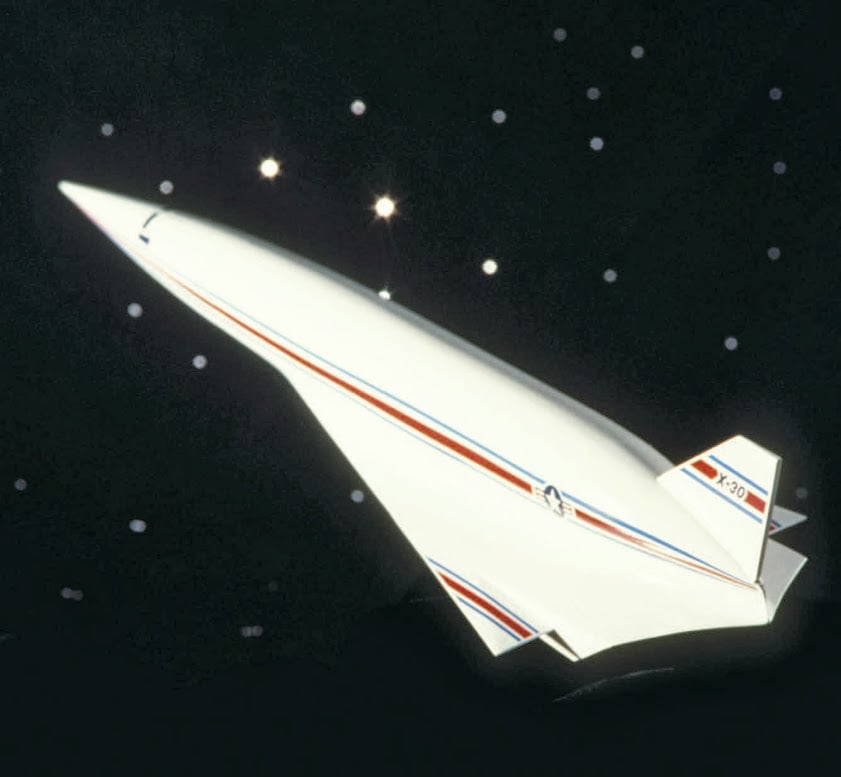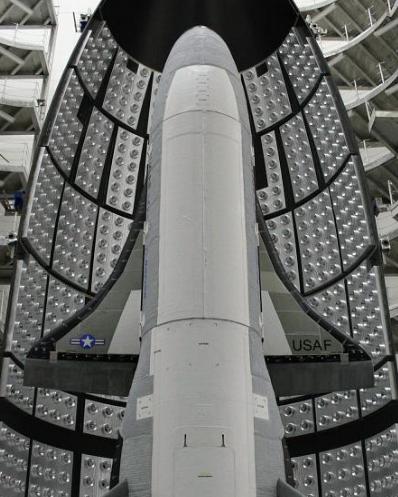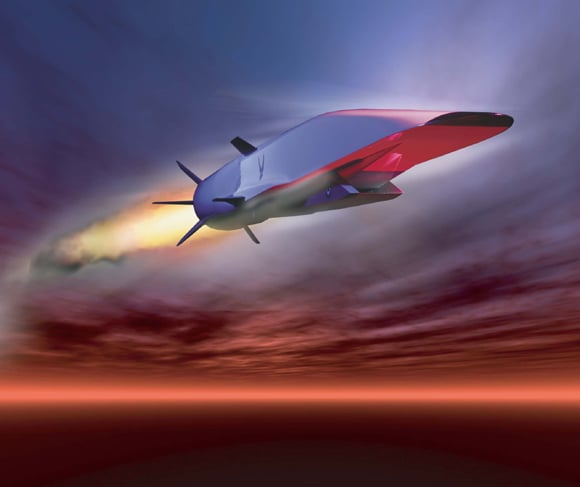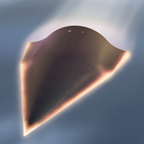Original URL: https://www.theregister.com/2013/09/18/so_you_thought_the_reusable_spaceplane_dream_was_dead_maybe_not/
DARPA: You didn't think we could make a Mach 6 spaceplane, so let us have this MACH TEN job
Cheap rockets? Bah! Give us a hyper-hydrocarbo-scramjet
Posted in Science, 18th September 2013 07:02 GMT
In this post-Space Shuttle world, it often seems that the dream of a spacecraft which could reach orbit without expensively throwing most of itself away is receding rather than drawing closer.

Last time DARPA went for a spaceplane - the X-30 SSTO concept of 1984
Sure, there's the tiny X-37B "space warplane", carrying out secret missions for the US Air Force, but this takes off atop a conventional throwaway rocket stack much bigger than itself. Yes, there's the British "Skylon" plan for a completely reusable runway-takeoff spacecraft, but its backers admit that it will cost at least £10bn to develop and the scheme has been around in one form or another since the 1980s – it seems unlikely to turn up soon.
There's also internet zillionaire Elon Musk and his rather different plan, under which fairly conventional rocket stages would come down to land vertically on a pad after hurling their payloads into the sky: but while the "Grasshopper" project has demonstrated that rockets can set down vertically without problems, it has not shown that the launch stack can spare enough fuel for this to happen and still do its job cost-effectively. Certainly, at the moment Musk's rockets mostly destroy themselves on actual use, just like any others.
So it might seem to many observers that the dream of re-usable, affordable access to space for the human race remains as far off as ever.

Something like this - but we want the rocket ON TOP of the plane
As ever, however, the Pentagon's applecart-bothering boffinry bureau DARPA would like to change things. The wild-hare war brainiacs already have a cunning scheme for a Mach-20 hypersonic rocket glider, though this wouldn't be especially re-usable - it's expected to launch atop a throwaway stack.
This week, however, DARPA lobbed out an announcement that they also aim to build a machine they refer to as "Experimental Spaceplane One" (XS-1). This rather reverses the usual pattern in which spaceplanes are fired into space by a big rocket, as seen with the space shuttle, X-37B etc. Instead, the XS-1 spaceplane will act as the first stage, hurling a rocket upper stage into the upper atmosphere at no less than Mach 10. The rocket will then carry on to deliver a payload into orbit while the "aircraft like" XS-1 returns to Earth and flies again.
The XS-1 programme is also expected to deliver:
Reusable, long-life, high thrust-to-weight, and affordable propulsion systems
Which would appear to indicate a return to the scramjet arena for DARPA. Ordinary ramjets top out at between Mach 3 and 4 due to the need to slow down the rush of air through the combustion chamber below the speed of sound, so for full-on hypersonics one needs a supersonic-combustion job (eg a scramjet).
Hydrogen-fuelled scramjets have hit the XS-1 target speed of Mach 10 in tests, but hydrogen fuel is out of fashion among the trendy kids these days due to the great expense and difficulty of using it – though NASA still intend to use in their upcoming SLS mega-rocket, and the Skylon chaps think it's OK. Elon Musk favours kerosene in his new rockets, and DARPA and other US military labs have been struggling for years to get scramjets to run on more conventional hydrocarbon fuels. The XS-1 is intended to demonstrate "operations dramatically reducing infrastructure and manpower requirements while enabling flight from a wide range of locations", so it's plain that this is still the aspiration.
The various hydrocarbo-scramjet trials to date have had a spotty test record, to put it mildly, but the US Air Force's final X-51 Waverider test shot is said to have achieved sustained Mach 5 flight on relatively normal JP-7 juice. Perhaps this can be built on to achieve Mach 10 in the XS-1.
Gutsy effort by DARPA ... but will it really be worth doing?
A Mach 10 plane capable of rapid turnaround between missions will need to be pretty tough to resist the heat generated as it bores through the atmosphere at hypersonic speed. In DARPA's view this will be pretty much as bad as the frying the space shuttle used to suffer and the X-37B still does. The XS-1 will need "low-maintenance thermal protection systems that provide protection from temperatures and heating rates ranging from orbital vacuum to atmospheric re-entry".
Should the XS-1 project, unlike most DARPA drawing-board outings, reach the stage of an actual flying testbed, the aim is to achieve ten flights in ten days. At least one of these flights should see the plane hit Mach 10, and at least one of them should see a payload of 3,000-5,000lbs placed into orbit.

And engines like this - but twice as fast
As far as space delivery goes, this effort is somewhat reminiscent of other winged-first-stage efforts like the Pegasus rocket and its airliner launch platform, or the planned Stratolaunch scheme, featuring a much bigger rocket carried by a colossal six-engined monster jet. However, DARPA's XS-1 would see much more of the job done by the hyperplane first stage, leaving much less work for the rocket second stage to do. The warboffins think that this might let the XS-1 put stuff into low orbit for as little as $1,000 per pound.

Oh, and a heatshield like this
By comparison, Elon Musk today offers lift to low orbit at about $2000/lb on his Falcon 9 rockets. He expects to get that down perhaps as far as $700 on the upcoming Falcon Heavy, which will be the most powerful rocket in service worldwide when it arrives - possibly as soon as next year. And this is without any re-usable Grasshopper tech as yet. The ambitious space kingpin has stated previously that he thinks $500/lb is "very achievable".
So it would seem that even if DARPA can make the huge technical leaps required for Mach-10 hydrocarb hyperjets and easily-reusable heatproof aeroshells, the agency may find itself left behind on cost by comparatively simple kerosene rockets.
However DARPA says this isn't just a space launch system, it's an attempt to build basic technologies:
The long-term intent is for XS-1 technologies to be transitioned to support not only next-generation launch for Government and commercial customers, but also global reach hypersonic and space access aircraft.
And in any case, as the XS-1 comes from DARPA, the odds are overwhelmingly against it being funded or succeeding if it does. The comparatively simple "Blackswift" plan, which would have produced a relatively modest Mach 6 hydrocarb hyperjet without any space-rocket launch capacity, was stifled by sceptical Washington politicians some years back. The limited success of various hypersonic projects since then wouldn't seem to have changed the landscape enough to mean a different fate for the much more ambitious XS-1.
Though the project will be classified as a military secret, like all advanced US aerospace projects, more information may be forthcoming in further public announcements. We'll keep you posted if so. ®